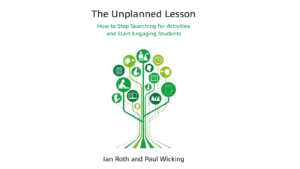What’s changing in English Language Teaching?
During the first week of August, Cambridge University Press’s Better Learning conference brought together 75 key English Language Teaching influencers and decision makers from around the world to discuss the most important issues facing students and teachers today and the trends we can expect to see in the near future.
The delegates’ ideas provide major insights as to how the world of ELT will change over the next five years. Even though there are age-specific issues on the horizon, personalized learning for both instructors and learners emerged as a need in all sectors—Primary, Secondary, and Adult.
Primary
Assessment for Learning and Differentiated Instruction dominated the discussion among professionals working with children. There is a strong sense amongst primary teachers that a one-size-fits-all approach isn’t sufficient to address the needs of mixed-ability classes, a daily challenge that instructors often solve with their own ingenuity.
The field expects differentiated learning to be an organic component of new materials, both print and digital. Instructors also demand differentiated and personalized professional development that will help them address the specific demands of the specific setting where they work.

Secondary
It is no secret that secondary schools are working under tight budgets and increasing demands from families and government programs. Implementing content-based learning and using digital resources will play an important role over the next few years.
Bilingual teaching, something we already see widely employed in international schools, will likely soon be taken up in the Secondary curriculum more broadly. An ever-increasing number of secondary schools are being tasked with implementing a CLIL approach with adolescents and young adults.Additionally, instructors will benefit from professional development programs that will help them to integrate digital resources into their teaching and to help them address the knowledge gap between instructors and students in the use of digital resources.

Adult
Teacher training, Personalized Learning, and the coexistence of digital and “traditional” content dominated the discussion among those working with adult learners.
Collaboration between publishers and higher education institutions, such as Cambridge’s partnership with Laureate International Universities, will be ever more important in the next five years. This will ensure that learning is contextualised at a local level, and adaptable to the varying needs of different institutions. This adaptive and personalized approach also applies to professional development programs for instructors.
Programs in adult and University settings will offer flexible learning in order to address the needs and interests of learners from different fields of work and study. Digital resources have the potential to facilitate individualized learning in classrooms that include students whose interests range from law to business to science.
These are just some ideas on what could be changing in English Language Teaching over the next five years. Do you agree? What would you add?




